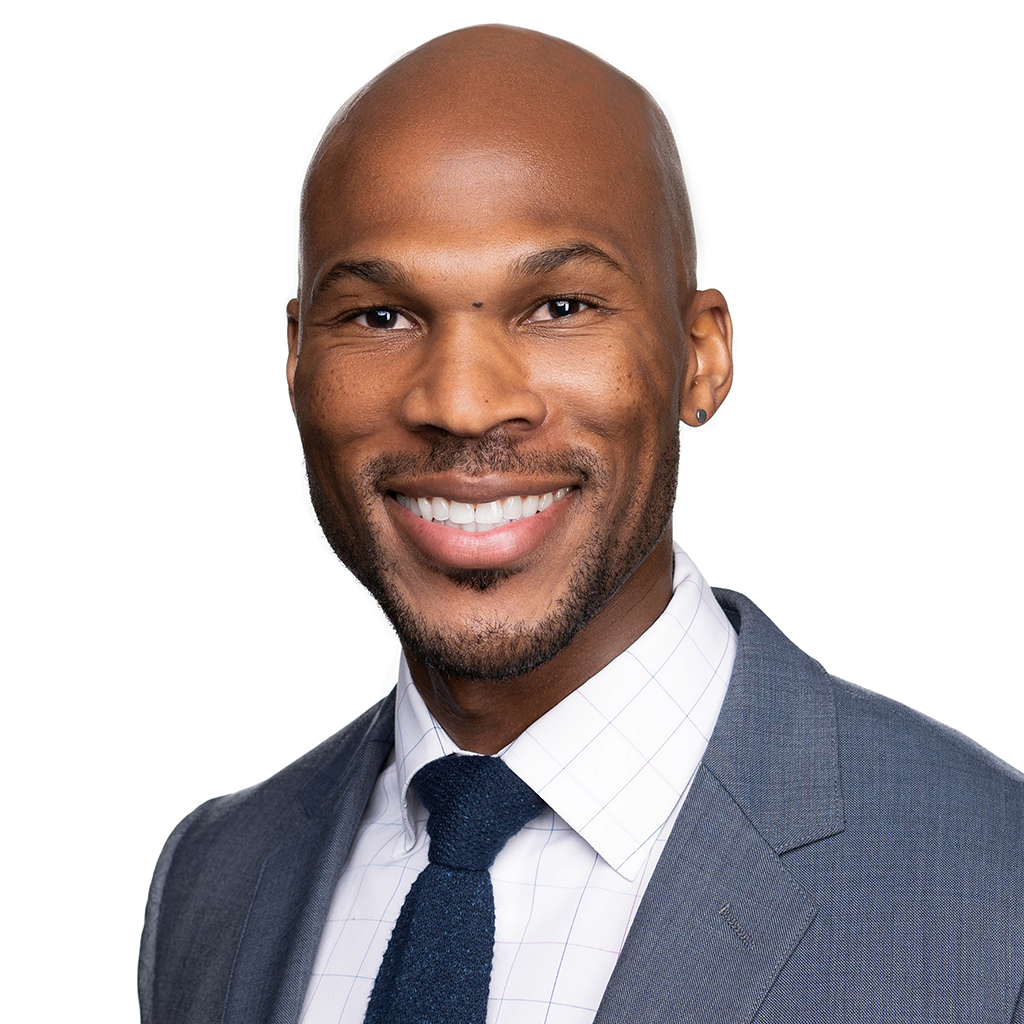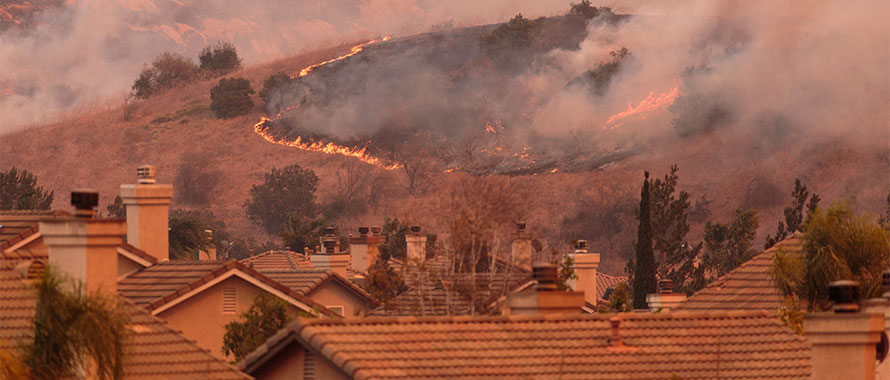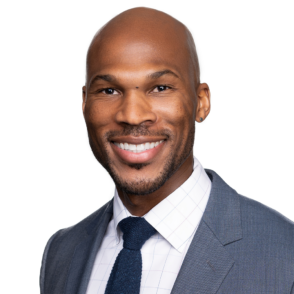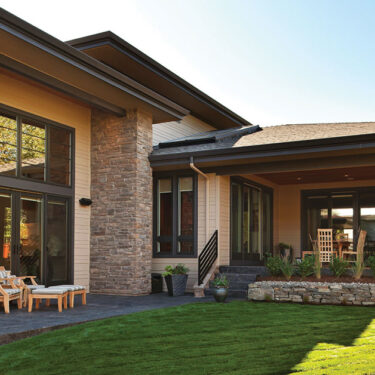More than 1.2 million homes in California are at a moderate or high risk of wildfire damage, representing a reconstruction cost value of more than $760 billion, according to a new report on wildfire risk in the U.S. It is just one of the findings from property analytics firm CoreLogic’s 2023 Wildfire Risk Report, which details wildfire threats, reconstruction costs, trends, and impacts on insurance carriers.
Featured Solutions
“This report clearly demonstrates the wildfire exposure that exists in the Western part of the country, and it clearly outlines the challenges that the insurance industry has in trying to write property in these states,” said Bill Gatewood, Corporate Senior Vice President, National Personal Insurance Practice Leader, Burns & Wilcox, Detroit/Farmington Hills, Michigan. “It is not surprising, but seeing it all laid out in this way really gives a clear picture of what we are dealing with — and it is not good.”

It is not surprising, but seeing it all laid out in this way really gives a clear picture of what we are dealing with — and it is not good.
As climate change and other factors worsen wildfire risks in the U.S. — including a 93% increase in acres burned between 2010 to 2022 compared with 1990 to 2000 — more homeowners will find themselves at risk and, in some cases, with fewer options for obtaining Homeowners Insurance.
“We have seen replacement costs increase pretty rapidly over the past five years or so,” said Albert Reed, Manager, Personal Insurance, and Senior Underwriter, Personal Insurance, Burns & Wilcox, San Francisco, California. “It is unfortunate for a lot of new consumers because that not only makes their insurance cost more, but it also leads to more insurance companies, especially in California, being not so thrilled about insuring homes in these areas.”
Climate change fuels growing wildfire risk
According to the National Oceanic and Atmospheric Administration, three primary factors influencing wildfires — temperature, humidity, and lack of moisture in fuels such as trees and shrubs — each have direct or indirect ties to climate change. A 2021 study found that climate change was the main driver of increased fire weather in the Western part of the U.S., and experts in Washington state have noticed that wildfire seasons are lasting longer and burning differently, making wildfire season start earlier and continue later into the year than usual, the Spokesman-Review recently reported.
In Canada, wildfires have burned 100,000 square kilometers of land so far in 2023, which is four times as much as an average wildfire season in the country, Reuters reported in July. In addition, the New York Times recently reported on a new Canadian study that claimed the hot, dry and windy conditions that have fueled recent wildfires are now twice as common due to climate change.
“We are seeing the number of drought days increasing, and we are also seeing them spreading into parts of the country we have not previously seen with any regularity,” Gatewood said. “There is definitely something going on in terms of creating conditions that make wildfires much more likely from a climate standpoint.”
The rising reconstruction costs explored in CoreLogic’s recent report are another concern, with the firm pointing out that a California home with a reconstruction cost value of $500,000 in 2018 would now cost $667,500 to rebuild. Increased materials costs and labor shortages are contributing to the issue, and a June report from Bank of America indicated that the cost to build a home in the U.S. has “risen at an unprecedented pace” over the last four years, MarketWatch reported.
“I do not see reconstruction costs going down anytime soon,” Reed said. “From an insurer’s perspective, it is just increasing the exposure.”
Although inflation may level off and reduce the extent of these increases, today’s homeowners are also at a higher risk of being underinsured on their Homeowners Insurance. “When you look at wildfire compared to other perils, you are generally looking at a large number of total losses,” Gatewood said. “Insurance carriers must rebuild and replace that entire home. The cost to rebuild is going up and the likelihood of needing a 100% rebuild is high in wildfire areas. Those are two conditions that make it very difficult for the industry to write a lot of brush-exposed property right now.”
Homeowners may face higher insurance rates, limited options
Homeowners Insurance policies would usually cover wildfire losses, but property owners in areas of heightened wildfire risk may have trouble finding coverage. “The immediate impact on homeowners is that they are seeing their rates go up, and they are also seeing their options limited,” Reed said.
Some insurance carriers, such as State Farm and Allstate, are no longer offering Homeowners Insurance policies in California for new clients, KFSN reported in June. The state’s FAIR Plan, which is the “insurer of last resort,” may be the only option for many homeowners, the San Francisco Standard reported on June 5. Other homeowners may be able to find Homeowners Insurance but at a higher rate or with a separate wildfire deductible.

The immediate impact on homeowners is that they are seeing their rates go up, and they are also seeing their options limited.
“We have these two things occurring simultaneously: we have a high hazard exposure that is growing and an insurance industry that is looking to reduce their concentration of wildfire exposed property,” Gatewood explained. “The appetite is going down, and the exposure base is going up. This is a big challenge for the industry and property owners looking for insurance.”
For some homeowners in high-risk areas, the availability of a Homeowners Insurance policy is its own victory. “There are many individuals who cannot get coverage at any price,” Gatewood said. “It is just a reality of the wildfire situation. Sometimes getting the quote is the victory, as hard as that is to swallow from an economic standpoint. That is just where the market cycle is right now.”
Steps to finding coverage, protecting property
When purchasing a Homeowners Insurance policy, homeowners should work with a specialized insurance broker to determine the best options available. An expert can “advise the homeowner on what is available in the marketplace and the best strategy of getting insurance placed,” Gatewood said.
“This situation is a great example of why consumers need the help of a retail insurance broker, to help them find coverage, somehow, some way,” he said. “It is always advisable to work with an expert. For most individuals, their house is their single biggest asset. If you lose that, you could end up with a significant financial hit that you may or may not be able to take. You want to trust it with an expert.”

This situation is a great example of why consumers need the help of a retail insurance broker, to help them find coverage, somehow, some way. It is always advisable to work with an expert.
An expert can also help customers stay on top of renewals, which is critical for homeowners in areas at higher risk for wildfire. If a policy lapses because auto-pay information is out of date, for example, reinstatement may not be offered. “You want to do everything you can to prevent losing your coverage,” Reed said. “It is not a requirement for them to take you back.”
Homeowners seeking coverage should also ask about any additional benefits that may be offered. For example, Burns & Wilcox automatically includes protection through Wildfire Defense Systems with Homeowners Insurance policies for all customers in the 10 states most at risk for wildfires. This preventative service can help homeowners prepare their property to withstand an ongoing wildfire, which could include creating a burn-free zone around the home, sealing vents, installing sprinklers, or even applying a fire-retardant gel to the home’s exterior in extreme cases, Gatewood explained.

You want to do everything you can to prevent losing your coverage. It is not a requirement for them to take you back.
“This is a service that we have used now for a number of years with great success,” he said. “They have helped save several homes from being destroyed by wildfire. It does not guarantee you won’t suffer a loss, but they have saved many homes and tens of millions of dollars of potential loss.”
For homeowners who have coverage under California’s FAIR Plan, supplemental programs may also be available, such as a Difference in Conditions (DIC) policy. According to Reed, the FAIR Plan is “pretty limited on the perils they insure,” and a DIC policy can provide broader coverage.
“This is an exclusive product we put together that has been really popular given the number of homeowners who have gone into the FAIR Plan over the last several years,” Gatewood said. “If you are working with a broker in another state, they may not even know it is available. This is another reason to work with a specialist.”
Homeowners should take steps to harden their homes against wildfire risk. This may include removing bark mulch, trimming back trees, and considering a metal or fire-resistant roof. Non-flammable rubber mulch is a good alternative, Gatewood said, and homeowners should aim for at least a 5- to 6-foot “non-combustible zone” perimeter around their home. “That is the big thing for consumers. There is a lot of risk mitigation that they can do that will reduce the chances of their home being lost in a wildfire,” he said. “It is not going to guarantee it, but they can reduce the risk.”
In addition, Reed added, “Those are all things homeowners can do that can also help make their home a little more attractive to being insured by the markets that are available.”





